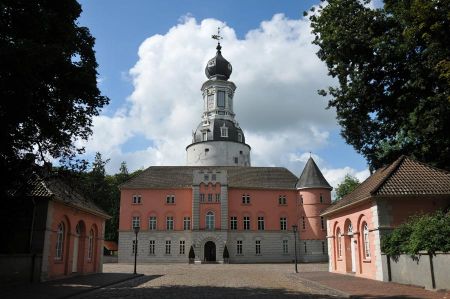Jever – old town festival and castle visit
- Written by Portal Editor
It really was pure coincidence that our trip to the North Sea, which we had planned together with Brita and Gerda, fell on the weekend when the old town festival, which is well known far beyond the city limits of Jever, was being celebrated.
So it was difficult to find a suitable hotel nearby, as there were already a number of bookings for this weekend. But we were lucky, there were still free rooms in town. So shortly after checking in, a first tour of Jever was announced, which began at Schlosserplatz.
Jever - an old town festival with long tradition
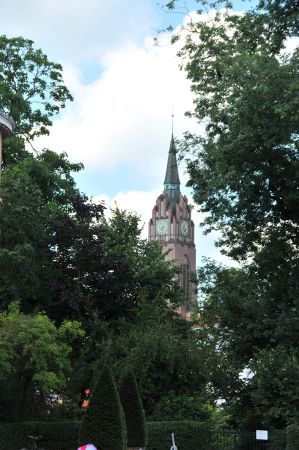 For many years, the Jever Old Town Festival has been a magnet for visitors from all directions, and the Old Town Festival has even become a fixed date for many former Jeverans or their friends to visit their old home and meet up with acquaintances.
For many years, the Jever Old Town Festival has been a magnet for visitors from all directions, and the Old Town Festival has even become a fixed date for many former Jeverans or their friends to visit their old home and meet up with acquaintances.
You have to imagine the old town festival as a kind of open-air event with many different types of music, which probably offers something suitable for every taste, in the middle of the city and is completely closed to vehicle traffic this weekend.
In addition to countless showmen, beer stalls, dance tents and more or less professional stalls, you will find the whole city center filled with colorful life and hustle and bustle and varied live music on 5 stages. So the long nights with music until the early morning are notorious.
Excellent live music in frot of castle
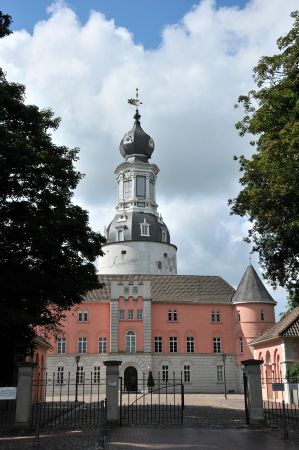 Our tour began at Schlosserplatz in the direction of Schlossgraft, then across the Alter Markt through Neue Straße, across the grounds of the brewery to the Pferdegraft and then to the Rathausplatz. Now on Friday evening the Old Town Festival was already very well attended, although Saturday is actually always the most important day of the Old Town Festival. In addition to many beer stands, there is almost everything your heart could desire, so your physical well-being was always taken care of. There was great live music on the church square, on the Alter Markt and in front of the castle, so we stayed for quite a while, despite the long day on the streets. The people presented themselves in a relaxed and happy manner and so some contacts could be made. Shortly after midnight the point was reached where the tiredness of the last few days due to the many events and impressions had caught up with us. So we turned to our accommodations.
Our tour began at Schlosserplatz in the direction of Schlossgraft, then across the Alter Markt through Neue Straße, across the grounds of the brewery to the Pferdegraft and then to the Rathausplatz. Now on Friday evening the Old Town Festival was already very well attended, although Saturday is actually always the most important day of the Old Town Festival. In addition to many beer stands, there is almost everything your heart could desire, so your physical well-being was always taken care of. There was great live music on the church square, on the Alter Markt and in front of the castle, so we stayed for quite a while, despite the long day on the streets. The people presented themselves in a relaxed and happy manner and so some contacts could be made. Shortly after midnight the point was reached where the tiredness of the last few days due to the many events and impressions had caught up with us. So we turned to our accommodations.
Jever - once a harbour and important trading place
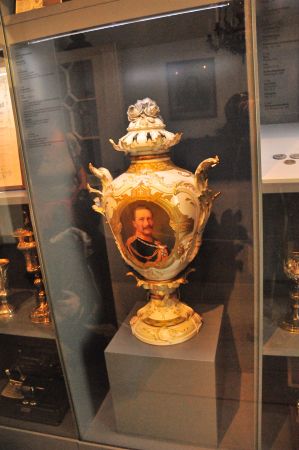 Some peculiarities about Jever should not be missing at this point, because they are more than just points that can be dismissed with "Oh, yes". The town of Jever lies on a ridge of geest that extends far into the marsh area, which is about 7 to 8 meters above the marsh level and consists of sand deposits that were deposited here during the last ice age. Jever, with its North Sea port, was once considered an important trading city. Hard to imagine today, because now it's about 25 kilometers to the sea. Today, a stylized harbor basin with a ship model as play equipment for children at the Schlachte is a reminder of this past. In the direction of Schortens there were huge moor areas with adjoining forest areas, which are now heavily frequented for local recreation by bicycle. The canals surrounding Jever, which are referred to here as low, are also among the popular local recreation areas. For a long time, the Hooksieler low was the connection between Jever's harbor and the sea, because around 1546 the outer harbor of the city of Jever was built in Hooksiel and so the low was used for years to connect Jever to the sea with smaller ships. Today, the lows are used for boat trips or bike rides along paths that mostly run parallel to the canals.
Some peculiarities about Jever should not be missing at this point, because they are more than just points that can be dismissed with "Oh, yes". The town of Jever lies on a ridge of geest that extends far into the marsh area, which is about 7 to 8 meters above the marsh level and consists of sand deposits that were deposited here during the last ice age. Jever, with its North Sea port, was once considered an important trading city. Hard to imagine today, because now it's about 25 kilometers to the sea. Today, a stylized harbor basin with a ship model as play equipment for children at the Schlachte is a reminder of this past. In the direction of Schortens there were huge moor areas with adjoining forest areas, which are now heavily frequented for local recreation by bicycle. The canals surrounding Jever, which are referred to here as low, are also among the popular local recreation areas. For a long time, the Hooksieler low was the connection between Jever's harbor and the sea, because around 1546 the outer harbor of the city of Jever was built in Hooksiel and so the low was used for years to connect Jever to the sea with smaller ships. Today, the lows are used for boat trips or bike rides along paths that mostly run parallel to the canals.
Klaus Störtebecker und Gödeke Michels
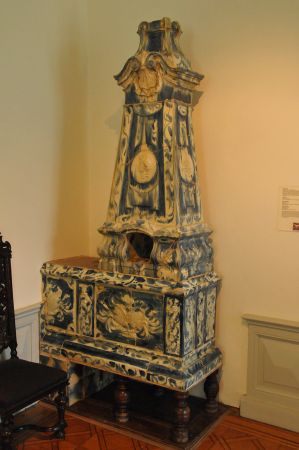 Findings from Jever and the surrounding area suggest an early settlement, for example a dolmen that was found completely intact around 1880 near Nobiskrug near Upjever was unfortunately blown up because it was considered to be disruptive to local agriculture. At the turn of the century, Jeverland was the settlement area of the Chauken. Around 826 Jever came under the rule of the Danish prince Hariold. The Gudrun legend also contains statements about the supremacy of the Danes in Friesland, because the singer Horand tells of his ride on the sand towards "Givers", the old name of Jever. This is probably the oldest mention of Jever. Around 1158 the name "Geverae" appeared, probably the Latinized form of the Low German Geveren, which means something like "pasture land". From the years around the 14th century, close trading relationships with the Vitali brothers are known, the well-known pirate cooperative who made the sea unsafe under Klaus Störtebeker and Goedeke Michels and were also known as "Likedeeler".
Findings from Jever and the surrounding area suggest an early settlement, for example a dolmen that was found completely intact around 1880 near Nobiskrug near Upjever was unfortunately blown up because it was considered to be disruptive to local agriculture. At the turn of the century, Jeverland was the settlement area of the Chauken. Around 826 Jever came under the rule of the Danish prince Hariold. The Gudrun legend also contains statements about the supremacy of the Danes in Friesland, because the singer Horand tells of his ride on the sand towards "Givers", the old name of Jever. This is probably the oldest mention of Jever. Around 1158 the name "Geverae" appeared, probably the Latinized form of the Low German Geveren, which means something like "pasture land". From the years around the 14th century, close trading relationships with the Vitali brothers are known, the well-known pirate cooperative who made the sea unsafe under Klaus Störtebeker and Goedeke Michels and were also known as "Likedeeler".
Edo Wiemken and Miss Maria from Jever
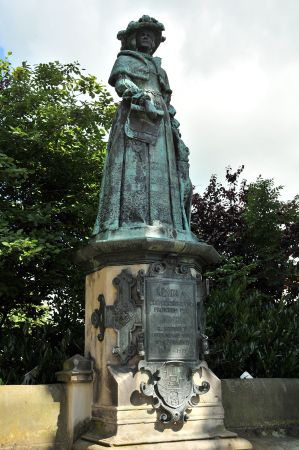 Around 1505 the construction of the castle was completed under the last chief of the Jeverland, Edo Wiemken, whose well-known tomb is in the only remaining part of the town church.
Around 1505 the construction of the castle was completed under the last chief of the Jeverland, Edo Wiemken, whose well-known tomb is in the only remaining part of the town church.
The tomb, which consists largely of wood carvings, is considered a real work of art among the monuments.
A little later, the heiress of Edo Wiemken brought Maria back to independence after a period of rule by the East Frisian Count Edzard the Great.
Under the leadership of the legendary ruler "Miss Maria", Jever received city rights and is called "Marienstadt" to this day.
Tsarina Catherine II in Jever Castle
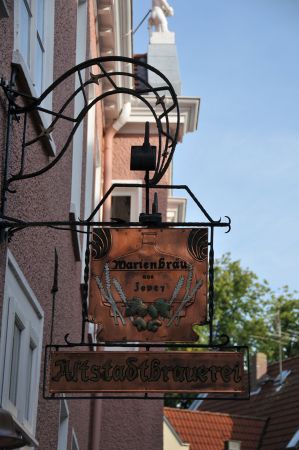 There was a particular curiosity in the story a little later when, due to the inheritance of the Zerbst princely family due to the special status, Jeverland was passed on as a Kukelle marriage to the next heir, the Russian Tsarina Catherine II.
There was a particular curiosity in the story a little later when, due to the inheritance of the Zerbst princely family due to the special status, Jeverland was passed on as a Kukelle marriage to the next heir, the Russian Tsarina Catherine II.
Jever thus became Russian, which is still documented today with a large painting of Tsarina Catherine II in Jever Castle.
Jever remained part of Russia until it was occupied by French troops in 1807. The following years were an interplay, because Jever was first attached to the Kingdom of Holland, later with Holland to the French Empire and back to Russia.
Around 1818 Jever came back to the Grand Duchy of Oldenburg. In 1888, even the Jever train station was given a waiting room that was exclusively reserved for the Grand Duke of Oldenburg.
Two thousand inhabitants in front of castle as a protest
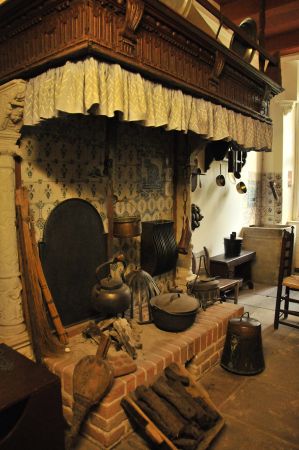 Unfortunately, there is also a shadowy period in the history of Jevers, which showed strong activities towards ethnic nationalism, here above all through the high school teacher Oskar Hempel, who, together with his colleagues at the Mariengymnasium, knew how to exert a strong influence on the citizens and thus on the city administration , so that Jever can be called a stronghold of National Socialism shortly after the First World War. The quotas obtained after elections for the National Socialists in Jever were on average almost 20% above the average of other German cities in the German Reich. This was accompanied by increasing anti-Semitism and the persecution of other minorities, as is known from history. When, almost at the end of the war, the NSDAP district leadership demanded that the city be defended against Allied forces, 2,000 citizens of Jever gathered in front of the castle to protest against the senseless defense of the city of Jever and thus ensured that the NSDAP followers were disarmed and then hoisted the white flag on the castle tower. When right-wing circles were again noticed in the city in the 1970s, there was some pressure from the left-wing opposition, so that the subject of National Socialism was dealt with democratically early on.
Unfortunately, there is also a shadowy period in the history of Jevers, which showed strong activities towards ethnic nationalism, here above all through the high school teacher Oskar Hempel, who, together with his colleagues at the Mariengymnasium, knew how to exert a strong influence on the citizens and thus on the city administration , so that Jever can be called a stronghold of National Socialism shortly after the First World War. The quotas obtained after elections for the National Socialists in Jever were on average almost 20% above the average of other German cities in the German Reich. This was accompanied by increasing anti-Semitism and the persecution of other minorities, as is known from history. When, almost at the end of the war, the NSDAP district leadership demanded that the city be defended against Allied forces, 2,000 citizens of Jever gathered in front of the castle to protest against the senseless defense of the city of Jever and thus ensured that the NSDAP followers were disarmed and then hoisted the white flag on the castle tower. When right-wing circles were again noticed in the city in the 1970s, there was some pressure from the left-wing opposition, so that the subject of National Socialism was dealt with democratically early on.
And as long there is no spoon in the cup ....
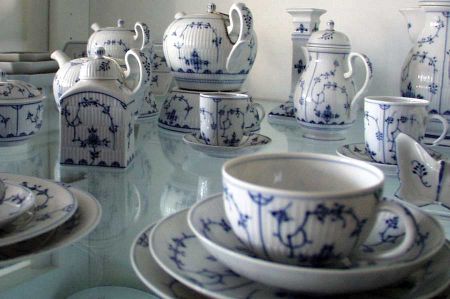 For the coming Saturday morning, Maria and Jochen had invited us to breakfast together, which we all happily followed. In addition to fresh rolls, there was of course also real East Frisian tea, which Jochen explained to you in the process. After choosing a Kluntjes, for the sweethearts among us it can be two, the really hot tea is poured on, so that the Kluntjes burst into countless small parts and the sweetness is better distributed. Now use the cream spoon to pour some cream onto the edge of the cup so that it slowly spreads over the surface of the tea and forms various figures. According to Jochen, stirring is strictly forbidden. Drinking it as hot as possible is the true pleasure of tea. And as long as there is no spoon in the cup, tea will be refilled without asking.
For the coming Saturday morning, Maria and Jochen had invited us to breakfast together, which we all happily followed. In addition to fresh rolls, there was of course also real East Frisian tea, which Jochen explained to you in the process. After choosing a Kluntjes, for the sweethearts among us it can be two, the really hot tea is poured on, so that the Kluntjes burst into countless small parts and the sweetness is better distributed. Now use the cream spoon to pour some cream onto the edge of the cup so that it slowly spreads over the surface of the tea and forms various figures. According to Jochen, stirring is strictly forbidden. Drinking it as hot as possible is the true pleasure of tea. And as long as there is no spoon in the cup, tea will be refilled without asking.
Alcove beds and the ornate sand patterns on the floor
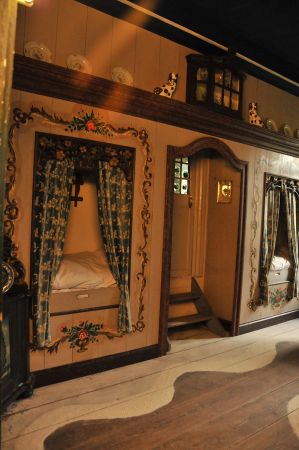 After breakfast, the old town festival was again on the program for us, because on Saturday there is a flea market for the younger ones and for private providers. So we moved back to the city center and used the opportunity for various cheap purchases and tastings. During the tour we decided to include the sightseeing tour of the castle and so we arrived at Jever Castle in the early afternoon. As a local history museum, the museum shows a variety of finds from the region as well as rooms from the areas of crafts and shops of local business people, which unfortunately can only be seen in the museum today in the course of renovations. The rooms of the castle itself are furnished according to the state of the art and allow a deep insight into the life of the people of the 15th century. Here it is mainly the rustically furnished rooms with their alcove beds and the decorated sand patterns on the floor. Particularly impressive is of course the so-called audience hall with the wonderfully carved wooden ceiling and the richly decorated leather wallpaper, in which classical concerts and readings still take place today. A tour that can be described as worthwhile just because of the audience hall. For several years it has been possible again to climb the castle tower, which, when visibility is good, allows a view of the island of Wangerooge.
After breakfast, the old town festival was again on the program for us, because on Saturday there is a flea market for the younger ones and for private providers. So we moved back to the city center and used the opportunity for various cheap purchases and tastings. During the tour we decided to include the sightseeing tour of the castle and so we arrived at Jever Castle in the early afternoon. As a local history museum, the museum shows a variety of finds from the region as well as rooms from the areas of crafts and shops of local business people, which unfortunately can only be seen in the museum today in the course of renovations. The rooms of the castle itself are furnished according to the state of the art and allow a deep insight into the life of the people of the 15th century. Here it is mainly the rustically furnished rooms with their alcove beds and the decorated sand patterns on the floor. Particularly impressive is of course the so-called audience hall with the wonderfully carved wooden ceiling and the richly decorated leather wallpaper, in which classical concerts and readings still take place today. A tour that can be described as worthwhile just because of the audience hall. For several years it has been possible again to climb the castle tower, which, when visibility is good, allows a view of the island of Wangerooge.
Rio, the legendary DJ and owner of "Whisky" in Wittmund
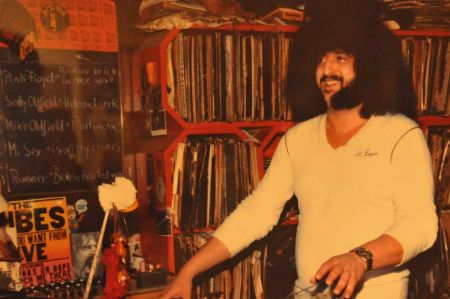 A very special highlight awaited us at the end of the tour and has meanwhile developed into a special attraction: the more recent contemporary history of the 70s, especially the discotheque and hippie scene and its main characters, above all Silverio de Luca, or Rio for short, the legendary DJ and owner of the "Whisky" in Wittmund. Countless well-known personalities were guests in his “shop”, including the designated Federal President Wulff. In addition to many exhibition accessories from the 1970s and 1980s, authentic material is shown on many of the oldtimer, Meta and Old Inn discotheques that were known well beyond the district borders at the time, or rather the meeting places of hippie culture. After all, Friesland was the center of the world in the 1970s, at least as far as music culture and hippie zeitgeist were concerned.
A very special highlight awaited us at the end of the tour and has meanwhile developed into a special attraction: the more recent contemporary history of the 70s, especially the discotheque and hippie scene and its main characters, above all Silverio de Luca, or Rio for short, the legendary DJ and owner of the "Whisky" in Wittmund. Countless well-known personalities were guests in his “shop”, including the designated Federal President Wulff. In addition to many exhibition accessories from the 1970s and 1980s, authentic material is shown on many of the oldtimer, Meta and Old Inn discotheques that were known well beyond the district borders at the time, or rather the meeting places of hippie culture. After all, Friesland was the center of the world in the 1970s, at least as far as music culture and hippie zeitgeist were concerned.
Please read as well:
Rime on trees and grasses in Friesland
The Krick Sea areas in the forest of Upjever
-
 City Hike through Old Town of Jever
City Hike through Old Town of Jever
City Hike through Old Town of Jever
City Hike through Old Town of Jever
-
 City Hike through Old Town of Jever
City Hike through Old Town of Jever
City Hike through Old Town of Jever
City Hike through Old Town of Jever
-
 City Hike through Old Town of Jever
City Hike through Old Town of Jever
City Hike through Old Town of Jever
City Hike through Old Town of Jever
-
 City Hike through Old Town of Jever
City Hike through Old Town of Jever
City Hike through Old Town of Jever
City Hike through Old Town of Jever
-
 City Hike through Old Town of Jever
City Hike through Old Town of Jever
City Hike through Old Town of Jever
City Hike through Old Town of Jever
-
 City Hike through Old Town of Jever
City Hike through Old Town of Jever
City Hike through Old Town of Jever
City Hike through Old Town of Jever
-
 City Hike through Old Town of Jever
City Hike through Old Town of Jever
City Hike through Old Town of Jever
City Hike through Old Town of Jever
-
 City Hike through Old Town of Jever
City Hike through Old Town of Jever
City Hike through Old Town of Jever
City Hike through Old Town of Jever
-
 City Hike through Old Town of Jever
City Hike through Old Town of Jever
City Hike through Old Town of Jever
City Hike through Old Town of Jever
-
 City Hike through Old Town of Jever
City Hike through Old Town of Jever
City Hike through Old Town of Jever
City Hike through Old Town of Jever
-
 City Hike through Old Town of Jever
City Hike through Old Town of Jever
City Hike through Old Town of Jever
City Hike through Old Town of Jever
-
 City Hike through Old Town of Jever
City Hike through Old Town of Jever
City Hike through Old Town of Jever
City Hike through Old Town of Jever
-
 City Hike through Old Town of Jever
City Hike through Old Town of Jever
City Hike through Old Town of Jever
City Hike through Old Town of Jever
-
 City Hike through Old Town of Jever
City Hike through Old Town of Jever
City Hike through Old Town of Jever
City Hike through Old Town of Jever
-
 City Hike through Old Town of Jever
City Hike through Old Town of Jever
City Hike through Old Town of Jever
City Hike through Old Town of Jever
https://www.alaturka.info/en/germany/lower-saxony/5684-jever-old-town-festival-and-castle-visit#sigProId6e7824d88c
